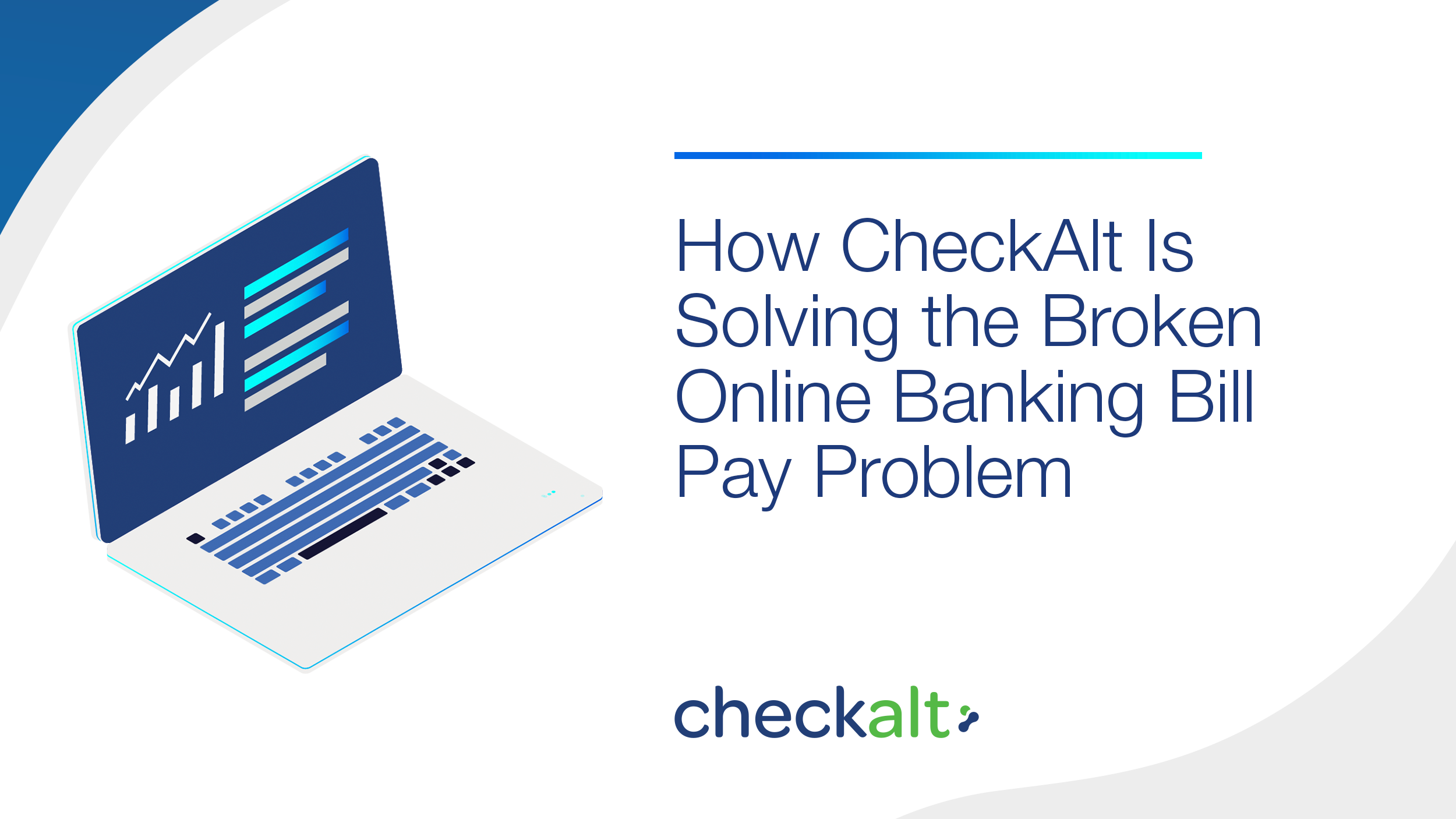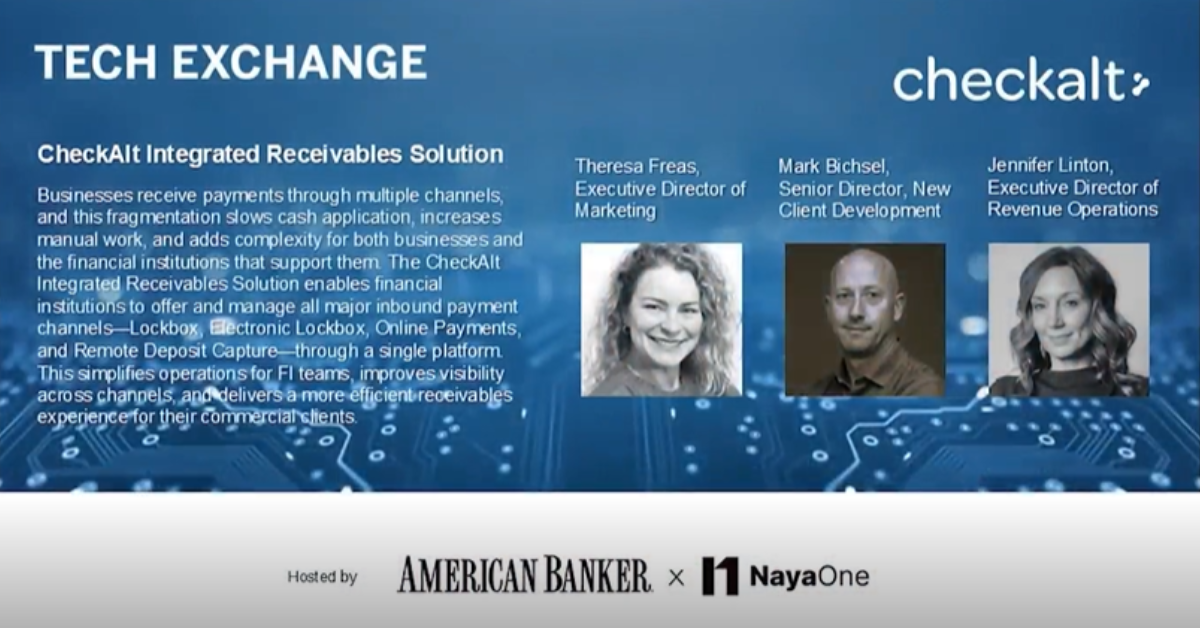The New USPS Postmark Rule: What It Means for Time-Sensitive Mailings
In today's fast-paced environment, organizations and individuals alike still rely on the U.S. Postal Service (USPS) to send and receive important...
3 min read

The postal delays and security concerns heightened in 2020 have further driven tens of millions of consumers across the U.S. to choose to pay homeowner’s association dues, tuition fees, trash bills, and other one-time or recurring payments to billers electronically instead of by check.
One would think the easiest way to pay a biller electronically in this new era of contactless experiences—especially those billers without their own payment portal—would be via a bank or credit union’s online bill pay tool since consumers log in daily to perform such routine activities as checking balances, transferring funds, paying down loans, opening new credit cards, and even investing. However, most of these consumers have no idea that many of the transactions they submit electronically through their financial institution’s online bill pay tool end up as the checks they intended to avoid in the first place—and most banks and credit unions are not equipped to solve this problem on their own.
These online banking bill pay checks are pesky; they often arrive at a biller’s office many days, sometimes a week after the transaction was initiated by the consumer, negatively affecting the business’ cash flow and potentially leading to customer service issues such as disputes over late payments that could escalate to a disconnection of service. The customer service issues caused by these checks go beyond the biller-consumer relationship and escalate to the financial institution, harming the consumer’s and biller’s experience with their bank or credit union. More than that, they add unnecessary costs to financial institutions—processing electronic payments are supposed to be more cost efficient than processing checks, but only when electronic transactions remain electronic.
Consider the online banking bill payment journey: a consumer pays his or her trash bill through a given bank or credit union’s online bill pay tool after entering the biller’s account information (perhaps found on an invoice). The payment is submitted; however, the biller is not recognized in the bill pay system—either the biller was not properly registered with the financial institution’s preferred bill pay aggregator, or not registered at all—so a check is cut for the payment on behalf of the payer to be delivered to the trash company. The bank pays for the printing and mailing of that check, which is then received by the biller several days or a week later. The biller now must get that check deposited, either at a branch or ATM, further delaying the application of the payment to the customer’s outstanding obligation. The biller’s bank then pays to process that check, and sometimes that receiving bank happens to be the same bank that cut the check in the first place.
This process is not one would expect to still occur in 2020, yet the problem persists because many financial institutions and businesses incorrectly believe they have a robust electronic lockbox processing solution enabled to keep online banking bill payments electronic. Rebecca Anthony has been working to solve this problem for the past 15 years with Chase Bank. She recently left Chase to become the Business Leader for CheckAlt’s online banking bill pay solution Catch!, seeing the broader impact she could have addressing the bill pay problem by working with hundreds of financial institutions and direct businesses.
“CheckAlt has created easy-to-use tools within its web-based portal to correct bad payee data, ensuring future payments post correctly as intended—electronically,” Anthony explained. “What’s more, CheckAlt has developed deep working relationships with bill pay aggregators to further analyze where payments are dropping to paper and how to eliminate that paper across the board. The solution we are providing to businesses across industry verticals—property management, higher education, and utilities, for example—is making a significant difference in stopping unnecessary paper from entering our financial system.”
One of the ways CheckAlt’s Catch! solution differs from other electronic lockbox offerings is the way Anthony and her team support billers to regularly update payee information over time. Using what are known as scrub files, billers provide data that is expected to drive the electronic transaction to process as intended. Scrub files provide a snapshot of bill payments from two different perspectives:
Historically, when a customer creates a payee for a bill payment, they do not correct the bad payee data to have future payments process electronically. It is the responsibility of the originator, the concentrator, and the biller to update the bad payee information to reduce paper transactions, which helps to eliminate the manual process of processing a paper check.
CheckAlt’s team works with billers to correct the scrub file over time, eliminating inaccurate customer data. For the many clients using CheckAlt’s Catch! today, this service has been a game-changer. As higher volumes of transactions remain electronic, biller and financial institution costs to process those transactions are reduced. Plus, the risk of a customer dispute due to a late payment (arriving by check in the mail days after the due date) is diminished.
Learn more about CheckAlt’s solution Catch! here: https://www.checkalt.com/products/electronic-lockbox
RECENT BLOG POSTS
• CheckAlt Completes Significant Milestone with Release of CaptureNet Management 3.0
• Why Financial Institutions Are Thriving with CheckAlt's Solutions

In today's fast-paced environment, organizations and individuals alike still rely on the U.S. Postal Service (USPS) to send and receive important...

Receivables are becoming harder to manage across separate systems. See how an integrated approach brings those channels together for a modern...

The Top 5 Most-Read Articles of the Year 2025 offered clear insight into what our audiences valued most: practical AI adoption, stronger fraud...